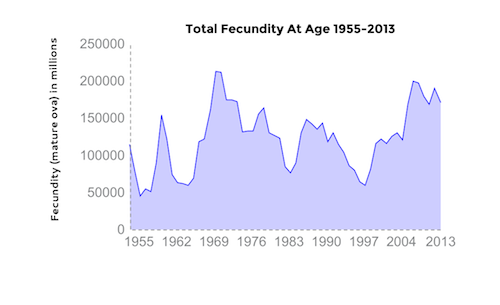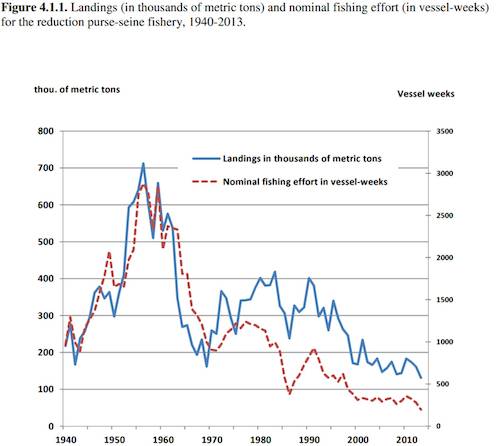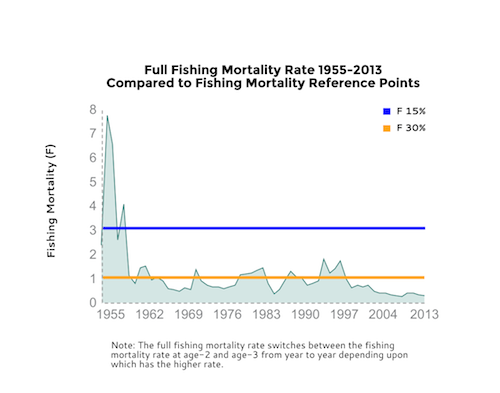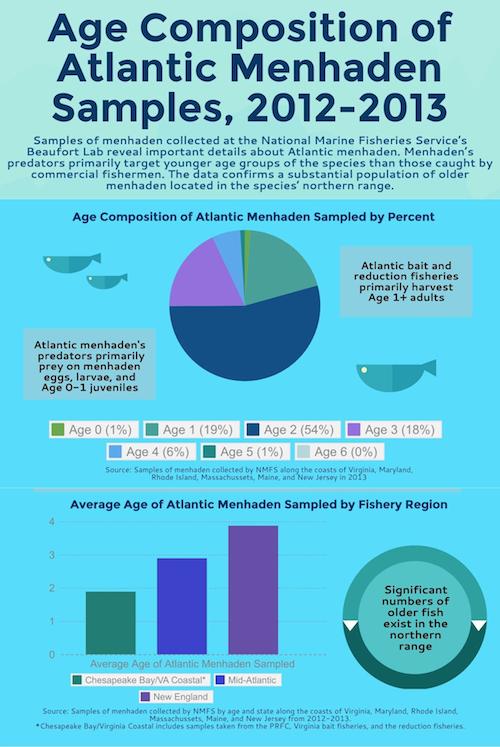This assessment, perhaps the most comprehensive evaluation of Atlantic menhaden ever conducted, contains some of the most positive indicators for the health of the species over the past sixty years.
WASHINGTON (Menhaden Fisheries Coalition) — February 1, 2015 — The following was released by the Menhaden Fisheries Coalition:
At its upcoming winter meeting on Tuesday, February 3 in Alexandria, Virginia, the Atlantic States Marine Fisheries Commission (ASMFC) will receive the completed results of the 2014 Atlantic Menhaden Benchmark Stock Assessment and peer review report. This assessment, perhaps the most thorough, comprehensive evaluation of Atlantic menhaden ever conducted, finds that menhaden are neither overfished nor experiencing overfishing, and also contains some of the most positive indicators for the health of the species over the past sixty-plus years.
A key measure of the species' health is fecundity, or the number of eggs that the coastwide menhaden stock produces annually. According to the 2014 assessment, current fecundity levels are among the highest since the 1970s and roughly 170 percent higher than the target levels set by regulators to ensure a healthy fishery. The number of these eggs that eventually mature into young menhaden-known as recruitment-is highly dependent on prevailing environmental conditions. The goal of menhaden management is to have enough eggs available in the ocean each year to take advantage of favorable conditions, a factor largely beyond human control, making fecundity one of the most reliable measures of sustainability. The recent assessment demonstrates that the Atlantic menhaden stock has more than enough reproductive capacity to sustain the species into the future and continue to support an important coastal fishery.

While fecundity is estimated to be near record highs, fishing mortality-the number of fish caught in the fishery-has hit an all-time low. This result follows years of low and declining fishing effort. Measured in terms of the number of weeks fished annually by menhaden vessels, effort since 2000 has been lower than at any other time on record, a period dating to before World War II. These low effort and fishing mortality trends began long before the heavy allowable harvest cuts in 2012.

According to the new Assessment, current fishing mortality is well below both the current reference points set by the ASMFC and the more conservative reference points recommended in the new assessment. The menhaden fishery currently has less of an impact on the menhaden population today than at any point in its modern history.

Also under discussion will be whether or not, current regulations allow for enough Atlantic menhaden to be left in the ocean to be available as forage for striped bass and other fish predators. A review of landings data provided by NOAA's Beaufort Lab in Beaufort, North Carolina indicates that further reductions in fishing effort is not likely to benefit these predators in any way. Striped bass prey primarily on menhaden under the age of one, including menhaden eggs and larvae, none of which are targeted by the menhaden bait or reduction fisheries. In other words, fishermen and bass are not in competition.
The same data also reveals that older menhaden are much more likely to be found in the northern range of the fishery, with fish caught in New Jersey and northward being primarily in the age 3-4 range. This means that older, larger menhaden are much more likely to migrate to northern waters outside the range of the commercial fishery. Accordingly, the new assessment model has been modified to recognize that a higher proportion of older fish, 4-plus years, survive and produce an abundance of eggs. This change has long been called for by prior peer reviewers and ASMFC science advisers.

With sky-high fecundity and rock-bottom fishing mortality, it is clear that any issues currently affecting menhaden are not being caused by the commercial menhaden fishery, and may likely be outside of the ability of managers to control. It's a well-documented fact that favorable environmental conditions (salinity, water temperature, predation, etc.) are the most prominent influence on menhaden recruitment. The best that fisheries managers can do is to make sure that the population can take advantage of these conditions when they do arise. Given the already-cited high fecundity, as well as the many other positive factors described in the 2014 assessment, it is clear that the menhaden fishery is sustainably managed and that responsible increases in menhaden quotas are supported by this new science.
